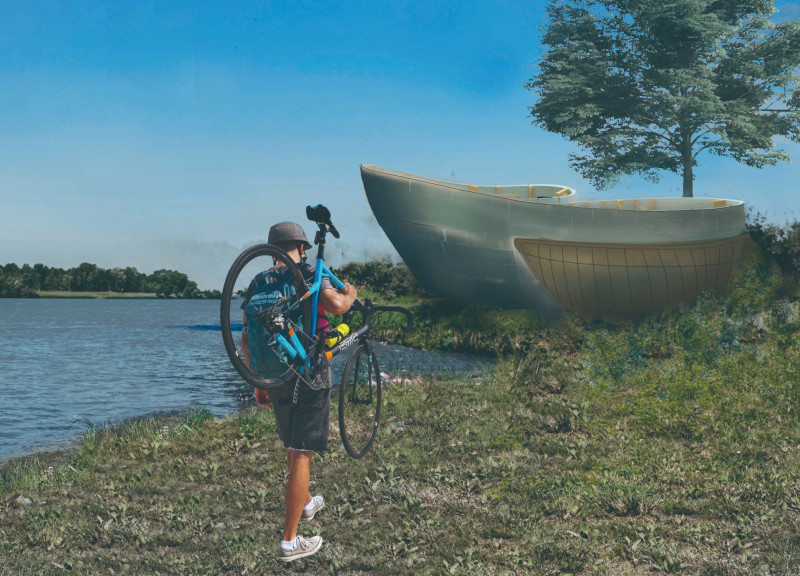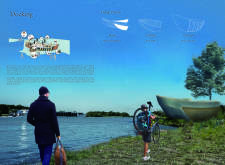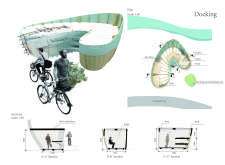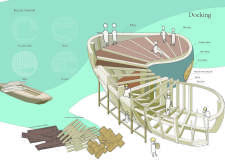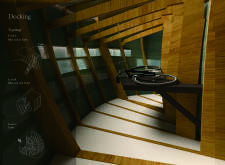5 key facts about this project
The primary function of "Docking" is to serve as a hub for cycling and pedestrian activities, providing amenities for users as they engage with the natural landscape. Key components of the project include bike storage areas, restrooms, and overnight accommodations, all thoughtfully arranged across multiple levels to facilitate ease of flow and access. The design caters to the needs of both day-trippers and longer-term visitors, making it an inclusive space for various user demographics.
One distinctive aspect of the "Docking" project is its shape, which mimics traditional boat structures, specifically local rivercraft known as "Zillens." This unusual form sets it apart from typical architectural designs along riverbanks. The integration of broad wooden curves not only provides a visually appealing aesthetic but also contributes to structural efficiency. The use of reclaimed wood and other sustainable materials reinforces the project’s commitment to environmental stewardship, aligning with contemporary design standards focused on sustainability.
The architectural plans include innovative features such as a seamless connection with the surrounding landscape, enabling a smooth transition between built and natural environments. Key design elements incorporate both a keel box and beam structure, which resonate with traditional boat-building techniques and enhance the project's robustness.
Furthermore, the layout supports a community-centric approach, encouraging interaction among users. The allocated areas for social gatherings, rest stops, and educational outreach enhance engagement with the river’s cultural significance.
To gain a deeper understanding of the "Docking" project, including its architectural designs and sections, interested readers are encouraged to explore the project presentation for detailed insights into its innovative architectural ideas and functionality.


